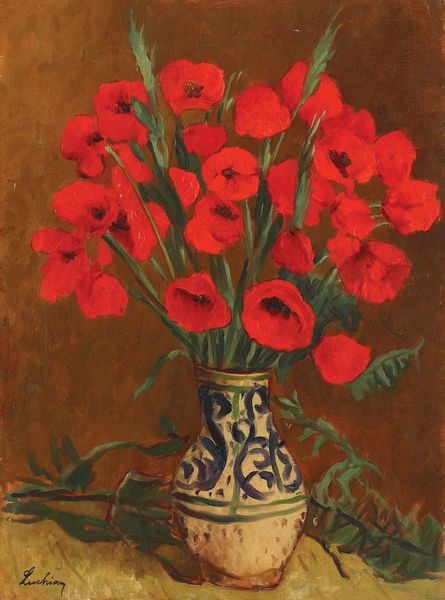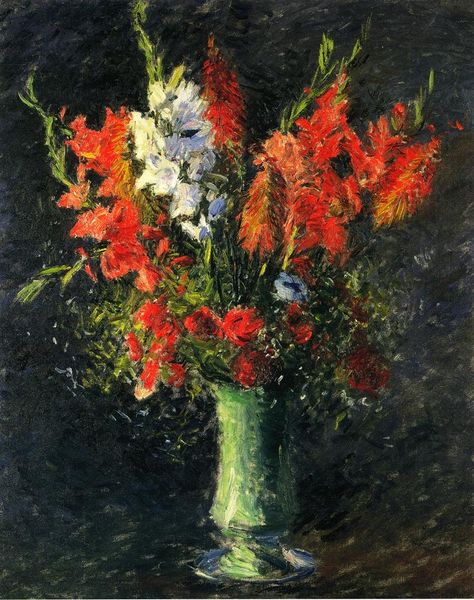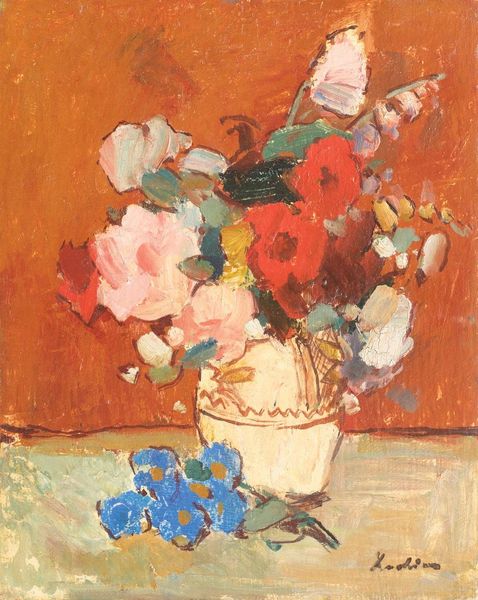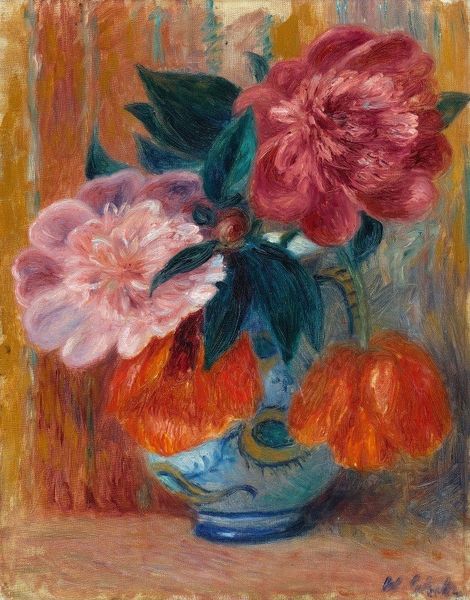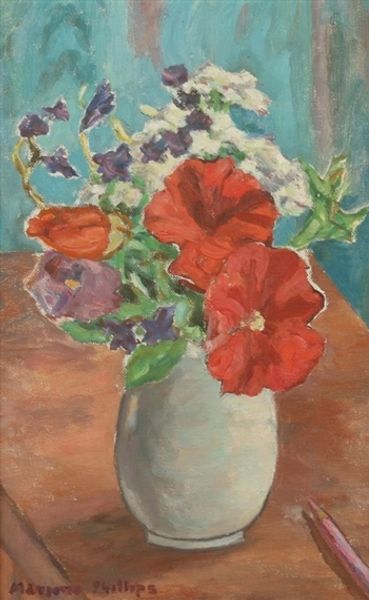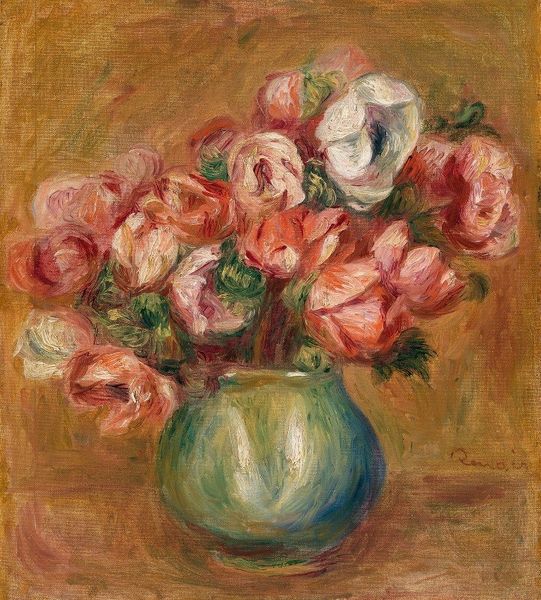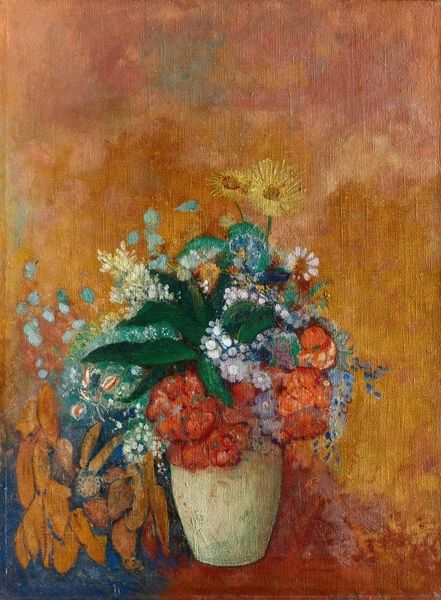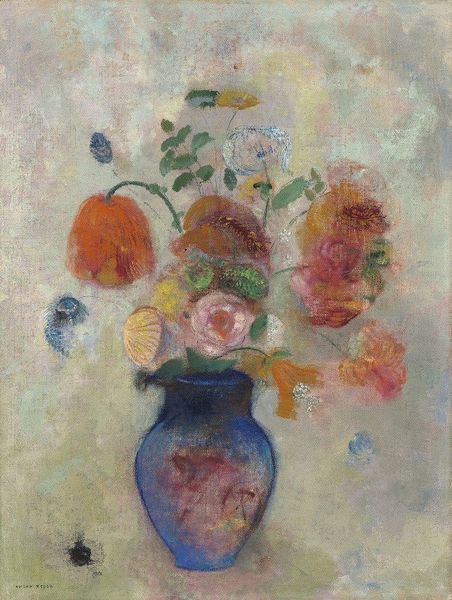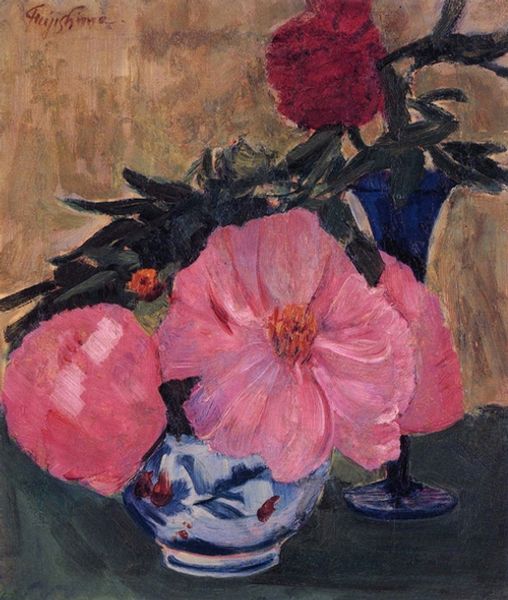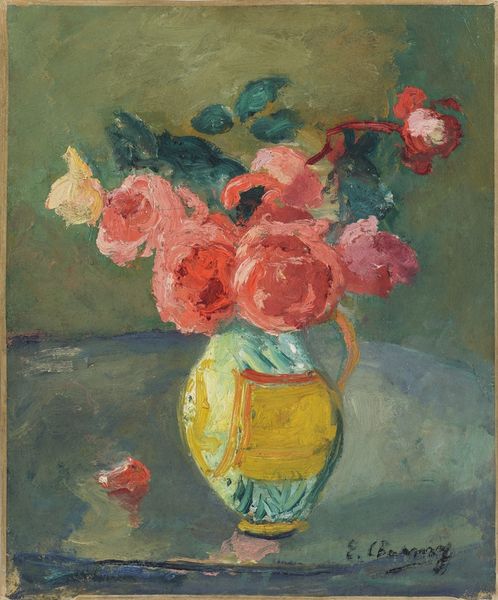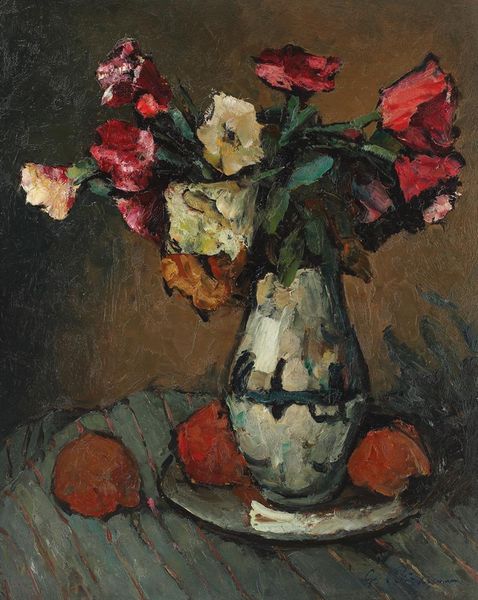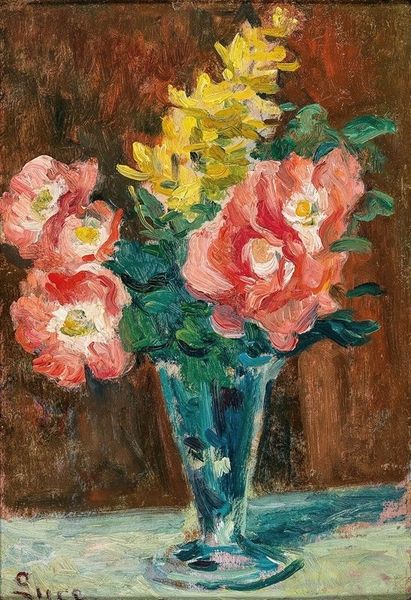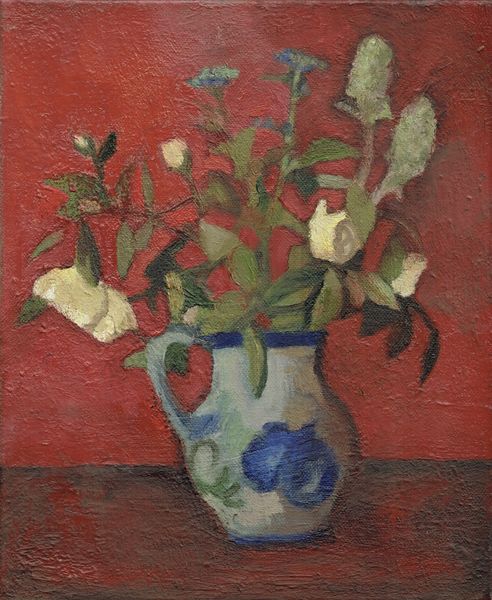
painting, oil-paint, photography, impasto
#
still-life
#
fauvism
#
painting
#
oil-paint
#
photography
#
oil painting
#
impasto
#
naive art
Copyright: Nicolae Darascu,Fair Use
Editor: Here we have Nicolae Darascu's *Vase with Petunias*, an oil painting with visible impasto, though it doesn’t have a specific date attached to it. The bold colors of the flowers really pop against the dark background, giving it a sort of naive charm. How do you interpret this work, especially given its Fauvist qualities? Curator: Considering the social context, still life as a genre offered artists relative freedom from direct political commentary, even though everything occurs in a political context. Its adoption by a Romanian artist like Darascu connects him to wider European movements. Think about how the rise of bourgeois culture fueled a demand for these intimate scenes of domestic life, suitable for private display and aligning with personal identity and expression. The “naive art” aspect you mentioned could even be seen as a reaction to the highly academic art institutions that had dominated prior. How do you view the reception of a Fauvist still life versus, say, a historical painting in that period? Editor: I guess a still life might have been considered less 'serious' and therefore less threatening to any dominant ideology. Curator: Precisely. Still life quietly negotiates a painter's skill and stylistic choices while avoiding grand narratives. Museums, too, shaped taste by promoting certain kinds of works over others. This leads me to wonder, if Darascu intended to directly address social concerns with a floral piece like this, how do you think he might communicate a critical narrative? Editor: I see what you mean, it could function as a quiet act of defiance, perhaps? It's fascinating to consider the layered meanings within something that seems so simple. I now wonder about the role galleries and exhibition spaces played in elevating this type of intimate art to public prominence. Curator: Indeed. It challenges the way we approach even seemingly simple art; to examine not just the brushstrokes, but the historical current moving beneath. Thanks, I hadn’t considered the defiance you mentioned. Editor: Thank you; this new context provides another way to think about art history.
Comments
No comments
Be the first to comment and join the conversation on the ultimate creative platform.
